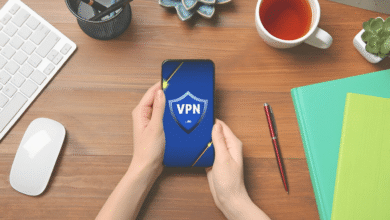How to Install and Use Antivirus Software

In today’s digital age, the importance of cybersecurity cannot be overstated. With the increasing prevalence of cyber threats, including viruses, malware, ransomware, and phishing attacks, it has become imperative to protect your devices and data from potential harm. One of the fundamental tools for safeguarding your computer and personal information is antivirus software. In this comprehensive guide, we will walk you through the process of installing and using antivirus software to ensure the security and privacy of your digital life.
Use Antivirus Software
What Is Antivirus Software?
Antivirus software, often referred to simply as “antivirus,” is a specialized program designed to detect, prevent, and remove malicious software, including viruses, worms, Trojans, spyware, adware, and other types of malware. It serves as a crucial line of defense against cyber threats that can compromise the security and functionality of your computer or other devices.
Read More: Do you need antivirus software? Yes! Check out Kim’s pick.
Why Do You Need Antivirus Software?
The internet is rife with threats, and your devices are constantly exposed to potential malware infections. Antivirus software acts as a shield, constantly monitoring your system and files for suspicious activities. Without antivirus protection, your computer is vulnerable to various security risks, including data theft, identity theft, and financial losses.
Types of Antivirus Software
Use Antivirus Software: Antivirus software comes in various forms, catering to different needs and preferences. Some common types of antivirus software include:
- Traditional Antivirus: These are standalone antivirus programs that primarily focus on detecting and removing malware. They offer basic protection against known threats and often require manual updates.
- Internet Security Suites: These comprehensive packages provide not only antivirus protection but also additional security features like firewalls, anti-phishing, and anti-ransomware tools.
- Free Antivirus Software: Many reputable antivirus vendors offer free versions of their software with basic protection features. While these can be a good starting point, they often need advanced security features found in paid versions.
- Paid Antivirus Software: These premium packages offer advanced security features, priority customer support, and frequent updates to protect against emerging threats.
Choosing the Right Antivirus Software
Research and Comparison
Use Antivirus Software: Selecting the right antivirus software involves thorough research and comparison. Start by reading reviews, consulting online security forums, and asking for recommendations from trusted sources. Consider factors like detection rates, performance impact, and ease of use.
Compatibility with Your Operating System
Ensure that the antivirus software you choose is compatible with your operating system (e.g., Windows, macOS, Android, or iOS). Some antivirus solutions are platform-specific, so double-check before making a purchase.
Features and Functionality
Use Antivirus Software: Evaluate the features offered by different antivirus programs. Look for features such as real-time scanning, automatic updates, firewall protection, and parental controls, depending on your specific needs.
User-Friendly Interface
A user-friendly interface can make a significant difference in your antivirus software experience. Please choose a program that you find easy to navigate and understand, as this will help you use it effectively.
Subscription Plans and Pricing
Use Antivirus Software: Consider your budget when choosing an antivirus solution. While free antivirus software is available, premium options often provide better protection and additional features. Evaluate the pricing structure, including subscription plans and any renewal costs.
Installing Antivirus Software
Downloading the Antivirus Software
Use Antivirus Software: Once you’ve chosen the right antivirus software, visit the official website of the antivirus vendor and locate the download section. Follow the instructions to download the installation file. Be cautious of downloading from reputable sources to avoid downloading fake or compromised versions.
Running the Installer
Locate the downloaded installation file and run it. The installation process may vary depending on the antivirus software you’ve chosen, but it typically involves accepting the terms and conditions, selecting installation options, and choosing a destination folder for the software.
Configuration and Setup
Use Antivirus Software: After installation, the antivirus software may prompt you to configure certain settings. This can include setting up real-time protection, scanning preferences, and updating schedules. Please pay attention to these settings, as they can impact your overall security.
Activating Your Antivirus Software
Most antivirus software requires activation using a license key or activation code. This key is typically provided when you purchase the software. Enter the key as prompted during the installation process to unlock the full functionality of the antivirus program.
Updating Virus Definitions
Use Antivirus Software: Immediately after installation and activation, it’s crucial to update the antivirus program’s virus definitions. These updates contain information about the latest threats and are essential for effective malware detection. Ensure that automatic updates are enabled to keep your antivirus software up-to-date.
Using Antivirus Software Effectively
Performing Scans
Use Antivirus Software: Antivirus software typically offers various scan types, including quick scans, full system scans, and custom scans. Regularly perform scans of your computer to check for malware. Quick scans are useful for daily checks, while full system scans are more comprehensive and should be performed periodically.
Real-Time Protection
Real-time protection is a core feature of antivirus software. It continuously monitors your system and files for suspicious activity and prevents malware from executing. Ensure that real-time protection is always enabled for the highest level of security.
Quarantine and Removal of Threats
Use Antivirus Software: When your antivirus software detects malware, it may quarantine the infected files to prevent them from causing harm. Review the quarantine folder regularly and remove or restore files as needed. Always follow the recommended actions provided by your antivirus software.
Scheduling Scans and Updates
To maintain optimal security without manual intervention, schedule regular scans and updates. Please set up a scanning schedule that doesn’t disrupt your daily activities and configure the software to update virus definitions and the program itself automatically.
Monitoring Security Logs
Use Antivirus Software: Many antivirus programs provide security logs that record information about detected threats, updates, and system scans. Review these logs periodically to stay informed about your device’s security status and any potential issues that need attention.
Best Practices for Staying Secure
Keeping Your Antivirus Software Updated
Use Antivirus Software: Regularly check for updates to your antivirus software. Vendors frequently release updates to address security vulnerabilities and improve detection capabilities. An outdated antivirus program may not effectively protect your system.
Safe Browsing Habits
Antivirus software is just one layer of protection. It would help if you also practiced safe browsing habits, such as avoiding suspicious websites, not clicking on suspicious links or attachments in emails, and being cautious when downloading files from the internet.
Regular Backups
Use Antivirus Software: Back up your important files and data regularly. In the event of a malware attack or system failure, having up-to-date backups ensures that you can recover your data without paying a ransom or suffering data loss.
Software Updates
Keep your operating system, web browsers, and other software up-to-date. Software updates often include security patches that address known vulnerabilities, reducing the risk of exploitation by malware.
Strong Passwords and Two-Factor Authentication (2FA)
Use Antivirus Software: Use strong, unique passwords for your online accounts and enable two-factor authentication whenever possible. This adds an extra layer of security by requiring you to enter a one-time code sent to your mobile device or email.
Troubleshooting Common Issues
Software Conflicts
Use Antivirus Software: Sometimes, antivirus software may conflict with other software applications. If you experience performance issues or software conflicts, try adjusting settings or contacting customer support for guidance.
False Positives
Antivirus programs may occasionally flag legitimate files or applications as false positives. Check your antivirus software’s quarantine or detection history to identify and restore any false positives.
Slowing Down Your Computer
Use Antivirus Software: While antivirus software is essential for security, it can sometimes impact system performance. If you notice significant slowdowns, consider adjusting settings or upgrading your hardware for better performance.
Unwanted Pop-ups
Some antivirus programs may display notifications or pop-ups. Review your program’s settings to customize notification preferences and reduce distractions.
Licensing and Subscription Problems
Use Antivirus Software: If you encounter issues related to licensing or subscription, contact the antivirus vendor’s customer support for assistance. Ensure that your subscription is up-to-date to continue receiving protection and updates.
Read More: New antivirus scam email spreading — Don’t click!
Conclusion
Installing and using antivirus software is a critical step in safeguarding your digital life against the ever-evolving landscape of cyber threats. By following the steps outlined in this comprehensive guide, you can effectively protect your devices and data, ensuring a safer online experience. Remember that cybersecurity is an ongoing process, and staying informed about emerging threats and best practices is essential for maintaining your digital security in the long run.
FAQS
1. What is antivirus software, and why do I need it?
Antivirus software is a specialized program designed to detect, prevent, and remove malicious software, such as viruses, malware, and spyware, from your computer or device. It would help if you had it to protect your data, privacy, and the overall security of your system from cyber threats.
2. Do I need to pay for antivirus software, or are free versions sufficient?
While free antivirus software can provide basic protection, paid versions often offer more advanced features, better detection rates, and priority customer support. The choice between free and paid antivirus depends on your specific needs and budget.
3. How do I choose the right antivirus software for my computer?
Choosing the right antivirus software involves research, considering compatibility with your operating system, evaluating features, checking user-friendliness, and comparing pricing plans. Read reviews and seek recommendations to make an informed decision.
4. Is it necessary to schedule regular scans and updates, or can I rely on real-time protection alone?
Real-time protection is essential, but regular scans and updates are also crucial. Scheduling scans ensure that your system is thoroughly checked for malware, and updating virus definitions keeps your antivirus software capable of detecting the latest threats.
5. Can antivirus software slow down my computer’s performance?
Antivirus software can have a minor impact on system performance, but modern antivirus programs are designed to minimize this effect. If you experience significant slowdowns, consider adjusting settings or upgrading your hardware.











